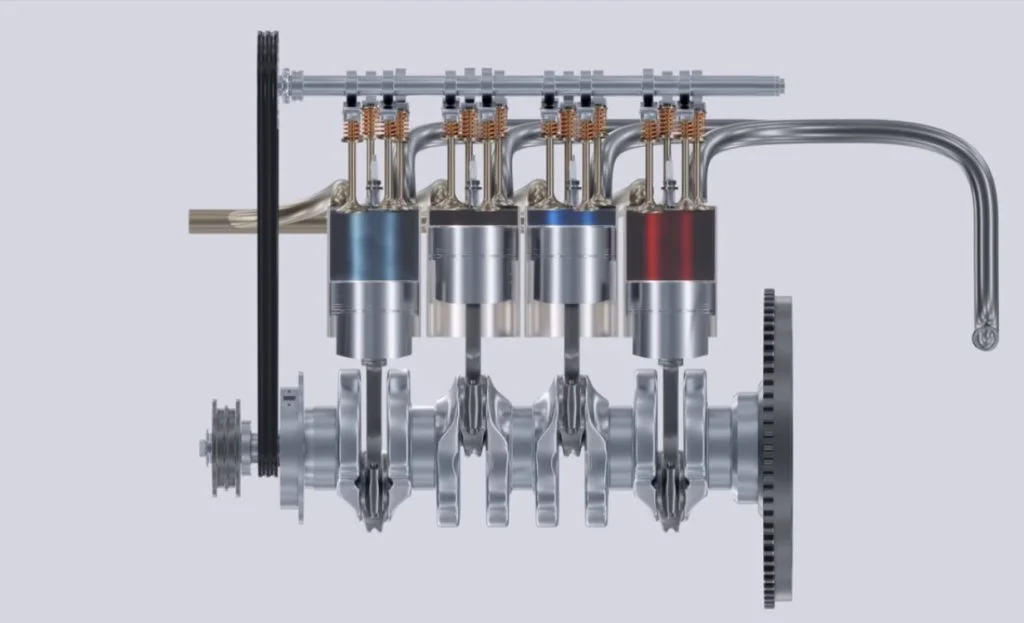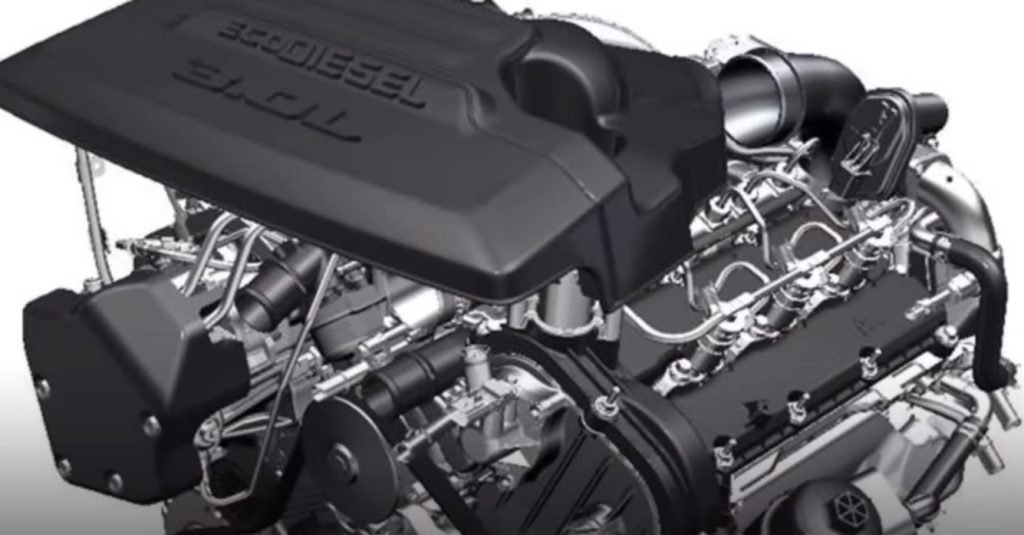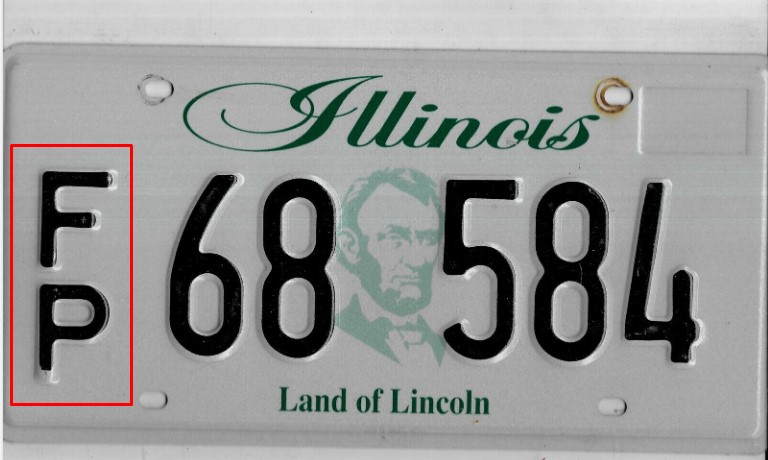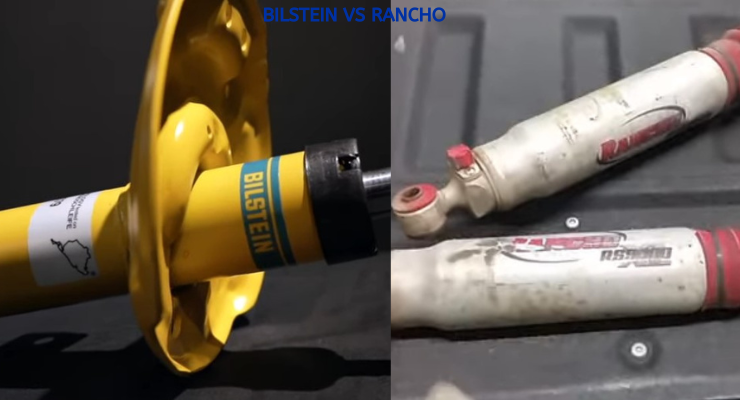How Many Gallons Does A Jeep Wrangler Hold? A Complete Discussion
Jeep Wrangler is an excellent off-roading SUV with a large gas tank. Typically, the 4-door and 2-door models of Jeep Wrangler can hold 22.5 and 17.5 gallons, respectively, for 2021 models. The actual gas tank capacity of Jeep Wrangler depends on its model, trim, and variants.
So, how many gallons does a Jeep Wrangler hold? Also, what is its average mileage? And how can we improve the mileage of Jeep Wrangler? Before you hit the road, these questions might haunt you like a creepy ghost.
So, we are here to help you with everything about the Jeep Wrangler gas tank size, its mileage, and tips to boost its fuel efficiency. On the latest models of Jeep Wrangler, you can get around 20 to 21 MPG on the gas versions and 25-combined mileage on the 4-door hybrid versions. We will discuss if you can improve the mileage in different conditions.
Jeep Wrangler Gas Tank Size by Model Years:
How many gallons does a Jeep Wrangler hold? On average, you will see that most Jeep Wrangler models accommodate 17.5 to 22.5 gallons of gas. The tank can hold 66L to 85L of petrol or octane if converted.

Typically, the larger 4-door Wranglers have bigger tanks to accommodate the extra weight and length of the SUV. So they can hold 21 to 22 gallons of gas. On the other hand, the smaller 2-door Wranglers often have smaller tanks. It can accommodate 17 to 18 gallons of gas, on average. The specific capacity will depend on the trim, manufacturing model, and year.
Jeep Wrangler Gas Tank Capacity By Model and Year:
Jeep Wrangler has used different gas tanks of various sizes since the introduction of the SUV in 1987. Initially, it used the 20-gallon tank in its 1987-1990 models. And in the latest 2022 Jeep Wrangler, you get two different tanks for different models, 22.5 and 17.5 gallons, respectively.
| Model Years | Gas Tank Size | Estimated Mileage (City) | Estimated Mileage (Highway) |
| 2019-2022 | 17.5 gallons | 273 – 441 miles | 357 – 540 miles |
| 2019-2022 (4-door) | 22.5 gallons | 273 – 441 miles | 357 – 540 miles |
| 2011-2018 | 17.5 gallons | 310 – 473 miles | 390 – 516 miles |
| 2011-2018 (4-door) | 22.5 gallons | 310 – 473 miles | 390 – 516 miles |
| 2010 | 21.6 gallons | 20 – 21 MPG | 16 – 17 MPG |
| 2007-2009 | 18.6 gallons | 16 – 17 MPG | 20 – 21 MPG |
| 1998-2006 | 19 gallons | 16 – 17 MPG | 20 – 21 MPG |
| 1998-2006 (2-door) | 15 gallons | 16 – 17 MPG | 20 – 21 MPG |
| 1997 | 16 gallons | 243 – 401 miles | 329 – 480 miles |
| 1994-1996 | 20 gallons | 20 MPG (combined) | 20 MPG (combined) |
| 1990-1993 | 15.3 gallons | 243 – 401 miles | 329 – 480 mile |
| 1987-1990 | 20 gallons | Reasonable mileage | Reasonable mileage |
2019 to 2022 Models:
These Jeep Wranglers offer two main options for gas tank sizes, with most Wranglers featuring a 17.5-gallon tank. Also, some upgraded models, such as the 4-door versions, have larger 22.5-gallon tanks.
The flexibility allows consumers to choose between the two tank sizes and SUV variations to suit their needs. The larger tank provides an extended range. Hence, it is ideal for longer journeys or off-road adventures where refueling options may be limited.
The mileage for 2019 to 2022 models with these two tank variations is 273 to 441 miles in cities. And 357 to 540 miles on highways. So, the average mileage will be around 18MPG to 27 MPG for the 2018 to 2022 Jeep Wranglers.
2011 to 2018 Models:
Wranglers from the 2011 to 2018 era share a similar gas tank configuration. The capacity variations are 17.5 gallons or 22.5 gallons. The consistency in tank size across these model years for a longer period is the longest for Jeep Wranglers.
Also, with such consistency, consumers have access to a sufficient amount of fuel for their travels. It is regardless of the specific year within this range.
With these two tank size variations, you can expect to travel 310 to 473 miles and 390 to 516 miles on city traffic and highways, respectively. The actual mileage will vary between two different models and manufacturing years.
2010:
In 2010, Jeep introduced a 21.6-gallon fuel tank option for the Wrangler. Previously, it used only the 17.5 or smaller gas tank size. Hence, it was an excellent upgrade for the Jeep Wrangler and its users for long-road driving.
The larger tank was a welcomed addition for those who wanted to go further between refueling stops. It provided extra peace of mind, particularly when exploring remote or rugged terrains. The SUV gave 20 to 21MPG and 16 to 17MPG on highways and city roads, respectively.
2007 to 2009:
During these years, Wranglers typically came with an 18.6-gallon gas tank. The medium tank size and its capacity combine fuel storage and vehicle weight. Therefore, it is highly suitable for various driving conditions, including off-roading.
1998 to 2006:
Wranglers from this period featured a consistent fuel tank capacity of 19 gallons. Smaller versions, such as the 2-door ones, had 15 gallon capacity. It provided sufficient range for off-road enthusiasts and remained relatively constant across these model years.
Also, for these versions, you would get 16 to 17 miles in cities and 20 to 21 miles on highways. So, Jeep Wrangler remained consistent with its mileage and tank capacity during this time.
1997 Models:
In 1997, Jeep Wranglers had a 16-gallon gas tank. While smaller than some other years, the tank size still offered decent mileage between refueling. The SUV was made especially for casual adventurers who occasionally went into highways.
1994 to 1996:
Jeep Wranglers from 1994 to 1996 model years boasted a 20-gallon gas tank. Henceforth, it provided ample fuel storage for extended adventures. Adventure and off-roading enthusiasts appreciated the larger tank size during that period.
Also, with a 20MPG combined mileage, it was more than a decent choice.
1990 to 1993:
Wranglers had a 15.3-gallon fuel tank during this period. Of course, it wasn’t among the largest tank capacity for Jeep Wranglers. Nonetheless, it offered moderate fuel storage for everyday driving and light off-roading.
1987 to 1990:
Jeep Wranglers, from its first introduction in 1987 to 1990, featured a 20-gallon gas tank. Compared to other SUVs at that time, it was generous for its time. The larger offered reasonable mileage between refills, even when taking on challenging terrain.
Jeep Wrangler Gas Tank Size by Trims:
Besides the model and manufacturing year, different trims of Jeep Wrangler hold variable gallons of gas in it. The smaller Rubicon or Sports S have smaller tanks. On the other hand, larger ones, such as the Sahara version, accommodate larger tanks.
| Trim | Gas Tank Size | Gas Tank Size (Liters) |
| Sport, Sport S, Rubicon, Willys, High Altitude, 80th Anniversary, Freedom, Islander, X, MOAB, Sahara 4xe, Rubicon 4xe | 17.5 gallons | 66.2 liters |
| Sahara | 18.5 gallons | 70 liters |
| Sahara Altitude | 18.5 gallons | 70 liters |
The most common trims:
Sport, Sport S, Rubicon, Willys, High Altitude, and 80th Anniversary: These trims generally come with a 17.5-gallon (66.2 liters) gas tank. Also, the Freedom, Islander, X, MOAB, Sahara 4xe, and Rubicon 4xe have similar tank sizes of 17.5 gallons.
Sahara Trims:
On the other hand, the Sahara trim differentiates itself with an 18.5-gallon (70 liters) gas tank. So, it has extra fuel capacity. That additional fuel ensures that Sahara owners can tackle longer journeys or extended off-road adventures without frequent stops for refueling.
Sahara Altitude:
Like the Sahara, the Sahara Altitude trim also boasts an 18.5-gallon (70 liters) gas tank. It enhances the vehicle’s ability to handle extended trips and challenging terrain. Therefore, Sahara Altitude is a popular choice among off-road enthusiasts.
Factors Affecting The Fuel Efficiency of the Jeep Wrangler:
The fuel efficiency of the Jeep Wrangler depends on various factors, such as the engine type, the SUV’s transmission system, and driving conditions.

Engine Type:
The engine type used in Jeep Wrangler has the most impact on its fuel efficiency. Jeep Wrangler mostly has 3.6L, 3.8L, 2.0L and 3.0L engine variations. These engines offer 18 to 26 miles of fuel efficiency in different conditions.
| Engine Type | City MPG Range | Highway MPG Range |
| 3.6L V6 Engine | 17 – 18 MPG | 23 – 25 MPG |
| 2.0L Turbocharged 4-cylinder Engine | 22 MPG (with 8-speed automatic transmission) | 24 MPG (with 8-speed automatic transmission) |
| 3.0L EcoDiesel V6 Engine | 21 – 26 MPG | 29 – 22 MPG |
3.6L V6 Engine:
The 3.6 V6 engine is the most popular and reliable type in different Jeep Wrangler variations. It has a balance between power and efficiency.
Regarding fuel efficiency, these models achieve 17 to 18 miles in the city and 23 to 25 miles on the highway. Moreover, the V6 engine provides ample power for off-road adventures. So, its capacity to deliver respectable fuel economy with excellent power makes it a go-to choice engine for Jeep lovers.
2.0L Turbocharged 4-cylinder Engine:
Wranglers featuring the 2.0L Turbocharged 4-cylinder engine are known for their extra torque and power over the standard 3.6L engine in Mendon, MA. Indeed, with 295 pound-feet of torque and 270 horsepower, the 2.L turbocharged engine is more than capable of meeting your driving needs.

But how about its fuel efficiency? The 2.0L Turbocharged 4-cylinder engine is famous for improved fuel efficiency. When paired with an 8-speed automatic transmission, it gives you an average of around 22 miles per gallon in the city. And you will get 24 miles per gallon on the highway.
With its power and efficiency, the turbocharged engine is a solid choice for daily commuting and highway driving.
3.0L EcoDiesel V6 Engine:
The 3.0L engine is known for its reduced carbon emissions. What’s great is that the engine also pays your fuel cost nicely. The Wranglers, with the 3.0L EcoDiesel V6 engine, are the fuel efficiency champions of the lineup.
Thanks to the diesel engine’s efficiency, Wranglers with this powertrain achieve more than the average mileage of most models.

As per EPA rating, 3.0L EcoDiesel V6 Engine engines have:
- Rubicon: 23 combined mileage and 21 and 26 MPG in cities and highways.
- Other models: Regular Jeep Wranglers offer 29 and 22MPG in highways and cities with a combined EPA of 25MPG
Transmission System:
Jeep Wranglers have a 6-speed manual transmission option for its entire lineup. No doubt, the manual transmission offers more control to the driver. Nonetheless, it can be slightly less fuel-efficient than its automatic counterparts.
The lesser fuel efficiency happens due to potential variations in shifting habits. However, the difference in fuel efficiency between manual and automatic transmissions is not so significant, especially on highways.
The 8-speed automatic transmission is a popular choice among Wrangler buyers. It contributes to better fuel efficiency thanks to its optimized gear shifting and smoother operation. Hence, Wranglers with automatic transmissions offer more consistent and predictable fuel economy figures.
Driving Conditions
Wranglers generally achieve lower fuel efficiency than highway driving in urban or city driving conditions. Frequent stops, idling, and acceleration in city traffic can reduce the overall mileage of all the Wrangler models. The 2.0L Turbocharged 4-cylinder engine may fare better in city driving due to its smaller and more fuel-efficient engine.
On highways, Wranglers often perform at their best. The consistent speeds and minimal stops allow the vehicle to operate optimally, resulting in higher mileage figures.
Off-road adventures typically demand more power and fuel consumption. Rough terrain, inclines, and obstacles require additional energy to navigate. As a result, off-road driving for Jeep Wranglers tends to reduce fuel efficiency compared to on-road driving conditions.
Driving Habits:
Aggressive driving is responsible for reduced mileage on all vehicles. Rapid acceleration, sudden braking, and high-speed driving significantly reduce fuel efficiency. So, Wrangler drivers who frequently engage in aggressive driving may experience lower mileage. It is substantially lower than those who adopt a more conservative driving style.
Maintaining a steady speed, avoiding abrupt stops and starts, and using cruise control on highways can maximize fuel efficiency. Wrangler owners with a smooth, steady driving approach will achieve better mileage results.
Tips for Maximizing Fuel Efficiency in a Jeep Wrangler:
Jeep Wrangler is more than reliable for both on and off-road driving. However, their fuel efficiency remains highly questionable. So, you should carefully apply different techniques to improve its mileage.
Use Good Tires:
The best way to improve vehicle mileage is to use tires with excellent traction and an appropriate size. High-quality tires roll smoothly, while worn-out or low-traction tires can increase energy consumption. Naturally, it will negatively impact fuel efficiency.
Additionally, consider adjusting the gear ratio for optimal mileage if you frequently use larger off-road tires. Also, ensure the tire pressure remains 35 to 40 PSI, as the Wrangler users say.
Use Low-Weight Wheels:
The weight of wheels and tires significantly affects rolling resistance and fuel consumption. Heavy wheels increase rolling friction and fuel consumption. While heavier bead-lock wheels may be necessary for off-road performance, they also focus on fuel efficiency.
Therefore, choose tires that meet both fuel economy and weight-bearing capacity perfectly.
Engine Maintenance:
Proper engine maintenance is crucial for better fuel economy. Routine maintenance tasks for Jeep include:
- Cleaning spark plugs and spark plug wires,
- Changing the air filter for proper engine ventilation,
- Regularly replacing the engine oil and oil filter.
Additionally, the right exhaust system can improve ventilation to reduce fuel waste.
Reduce Jeep Weight:
A fully loaded Jeep with excessive cargo can decrease fuel efficiency. Each additional pound increases rolling resistance, resulting in reduced fuel economy. To improve mileage, consider using lightweight components, such as plastic flares, instead of aluminum or steel fenders.
Install Hood Latches:
Some Jeep Wrangler owners report experiencing hood flutter. It can impact engine ventilation and fuel efficiency. You need to install hood latches to secure the hood in place. The hood latches maintain proper ventilation and, in some cases, lead to better fuel efficiency.
Which Jeep Wrangler Model Has the Best Gas Mileage?: The Wrap-Up
We have discussed all possible points on how many gallons a Jeep Wrangler holds. So, you might be interested in knowing the best Jeep Wrangler with maximum mileage. So, before wrapping up, here’s the answer you were looking for:
If you’re seeking the best gas mileage in a Jeep Wrangler, the Jeep Wrangler 4xe, introduced in 2021, is a standout option. This innovative model combines electric and gasoline power sources that offer more than impressive fuel efficiency:
- Hybrid mode (electric motor plus gasoline): The Jeep Wrangler 4xe achieves an impressive 49 mpg with its hybrid mode. It makes it an eco-friendly and cost-effective choice for fuel-conscious owners.
- Without electric power: Even when not using electric power, the Jeep Wrangler 4xe still provides a respectable 20 mpg. It is similar to other Wrangler models, ensuring you have the versatility to handle various driving conditions.
So, you now have a complete idea of the Jeep Wrangler’s tank size, fuel capacity, and mileage. We want to sign off for now and will return with a new Jeep Wrangler knowledge soon.






